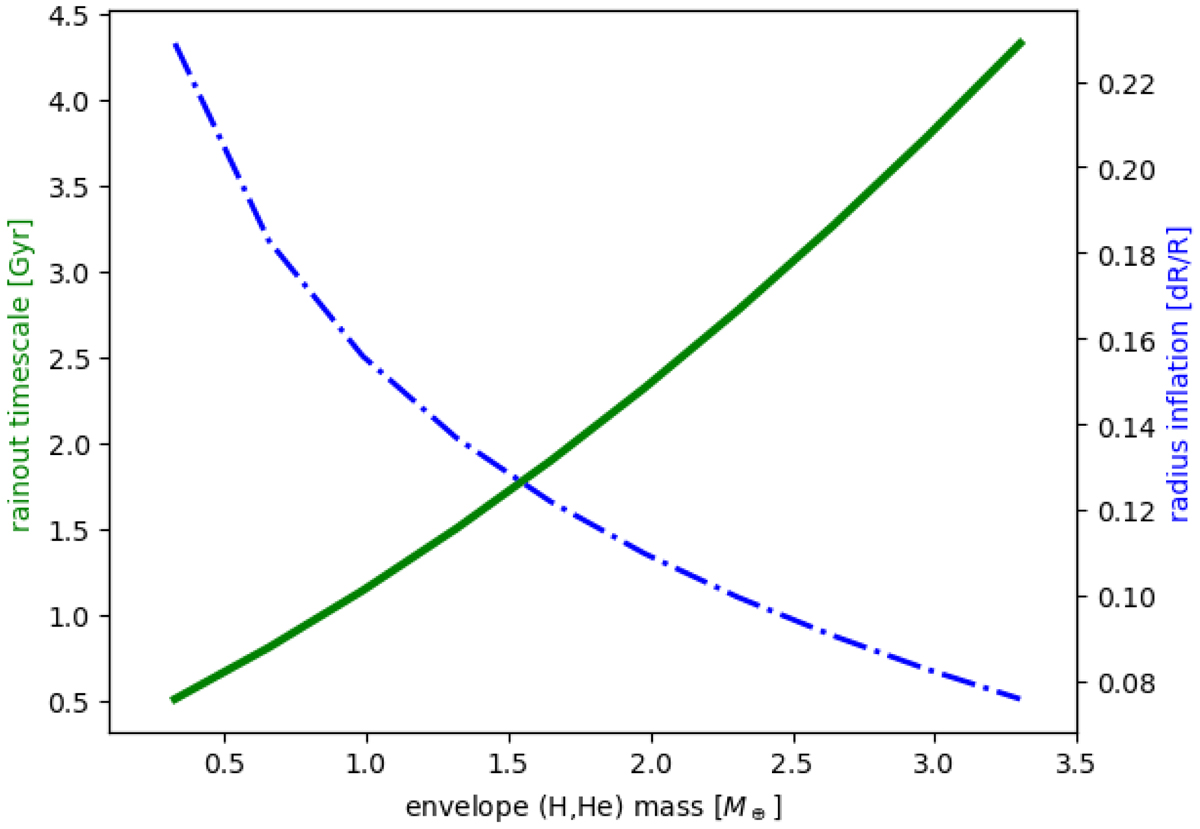Fig. 4.

Download original image
Time from formation until convergence to a core-envelope structure (rainout timescale) as a function of envelope mass, shown in green. Trend is shown for sub-Neptune planets that contain 6.7 M⊕ of silicates and their gas (H,He) mass is determined by the mass loss rate, from 3.3 M⊕ (original model, no mass loss) down to 0.33 M⊕ (3 M⊕ mass loss). In blue, we show the maximum radius inflation by rainout in comparison to the core-envelope structure model at the rainout timescale. Curves are polynomial fits for the evolution data points.
Current usage metrics show cumulative count of Article Views (full-text article views including HTML views, PDF and ePub downloads, according to the available data) and Abstracts Views on Vision4Press platform.
Data correspond to usage on the plateform after 2015. The current usage metrics is available 48-96 hours after online publication and is updated daily on week days.
Initial download of the metrics may take a while.


